


 |
 |
 |


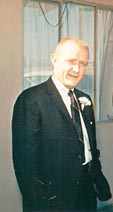
A-12 (60-6928 / 125) was lost on 5 January 1967 during a training sortie flown from Groom Lake. Its pilot, Walter L. Ray became the first CIA pilot killed in the line of duty and is so honored in the "Book of Honor", CIA Headquarters in McLean, Va.
Ray, an employee of the CIA, but ostensibly civilian pilot for Lockheed, was in the midst of what has been termed "a routine test flight" of the very secret Lockheed A-12, out of its hidden home at Groom Lake. The particular craft Ray was flying was known as "928", a shortening of its official tail number of 60-6928. To its owner, the CIA, with the usual "spook-speak" it was also known mysteriously as "Article 125" (Lockheed's production number). As far as the A-12 fleet went, it was relatively middle-aged, with 335 hours spread over 202 flights.
As for Ray, he was a very experienced pilot, with a long military background. Of his 3,354 hours of flight time, 358 hours were in A-12s. He had joined the OXCART project on November 7, 1962
 Walt and Diane had been married only 3 months when he took off from Groom at 11:59 AM (PST) that day, 1 minute ahead of schedule. It was to be a routine training and test mission to the northeast, executing a test plan labeled "66-12" and using the call sign "Dutch 45". The first aerial refueling, immediately after takeoff, was normal, with 928 taking on 36,000 pounds of fuel. After climbing and executing a Mach 3.1 cruise for a while, Ray descended for his second aerial refueling. He took on another 61,000 pounds of fuel, which was 4 to 5,000 pounds less than he was supposed to get, as the tanker had insufficient fuel. Ray was planning to mitigate this fuel shortage by executing a fuel-saving, reduced power climb on the next outbound leg.
Walt and Diane had been married only 3 months when he took off from Groom at 11:59 AM (PST) that day, 1 minute ahead of schedule. It was to be a routine training and test mission to the northeast, executing a test plan labeled "66-12" and using the call sign "Dutch 45". The first aerial refueling, immediately after takeoff, was normal, with 928 taking on 36,000 pounds of fuel. After climbing and executing a Mach 3.1 cruise for a while, Ray descended for his second aerial refueling. He took on another 61,000 pounds of fuel, which was 4 to 5,000 pounds less than he was supposed to get, as the tanker had insufficient fuel. Ray was planning to mitigate this fuel shortage by executing a fuel-saving, reduced power climb on the next outbound leg.
This tactic worked pretty well, and Ray was able to conserve enough fuel on his outbound leg so he was only a manageable 800 to 1000 pounds below what he should have had after completing the turn back to Groom. Then, things began to go sour.
At 3:22 PM, near Farmington, New Mexico, Ray reported he was down to 7,500 pounds of fuel, and said, "I don't know where it's gone." At that point in his flight, he was supposed to have about 13,000 pounds in his tanks, but Ray stated he thought he could still make it.
At 3:52 PM, descending near Hanksville, Utah, Ray reported he was low on fuel, and a minute later declared an official emergency.
At 3:56:27 PM, Ray radioed he was 130 miles out, had 4,000 pounds of fuel left, and was losing it at an excessive rate. Then 5 minutes later, at 4:01:34 PM, he reported that the low pressure lights for his fuel system had come on.....He was running out of fuel. 30 seconds later he called and said his engines were starting to flame out.
Finally, at 4:03 PM, at what under normal circumstances should have been a mere 10 minutes from safe touchdown, Ray made his final radio transmission to say both engines had flamed out, and was ejecting.
The way the ejection system worked on the A-12 (and likewise in the later SR-71) was not as most people would imagine. After ejection, the pilot remains strapped in his seat, and the seat releases a small drogue parachute to both slow and stabilize itself. Then, upon reaching some much lower, preset altitude, the seat releases the straps and the pilot is forcibly shoved out of the seat by the tightening of what are called "butt-snapper" straps. They are under the pilot's butt and force him up and out of the seat, hence the name. After that, the pilot's parachute opens automatically, and he completes his descent. The system was pretty well thought out, and was designed to safely recover pilots from extremely high altitudes, even if they were injured or unconscious.
As Ray passed through 16,000' the system attempted to work as advertised, but something went very wrong. As the butt-snapper straps tried to force Ray off the seat, his parachute backpack jammed under the seat's headrest. There are two reasons why this may have occurred, or perhaps it was a combination of the two. Ray was a short guy, and to ensure a good fit in his seat, the headrest was modified and extended further down. Another contributor were some screws in the seat installed in a manner that let them protrude a bit.
BG Dennis Sullivan - Dutch 23 reported that at Area 51 Walt Ray had the room next to him. One day Ray said that he could not get his head against the headrest on the ejection seat with the oversized parachute. Sullivan's comment was that this was a non problem, as Ken Collins found out early on when he bailed out.
On the day Walt was killed Sullivan had an early flight, the longest by a project pilot at that time, three air refuelings and all over country. Walt had the later mission which was shorter. When Sullivan got to the aircraft all suited up he noticed a balsa wood spacer glued on the headrest about two inches thick. He asked about it and was assured it was OK. Sullivan assumed it had been tested. It had not.
When Walt ejected the butt snapper fired and as it tried to separate him from the seat the survival kit pushed the parachute up and it wedged against the balsa wood block. He was locked into the seat with no way out.
A day or two later Sullivan knew the seat was going to be hung in a hangar and tested to see if the seat would separate when the G€śbutt snapperG€ť fired. He arrived just after they quit. It failed seven times in a row. Sullivan believed this unauthorized, untested mod killed Walt. It was the failure of a system that allowed untested modifications to be made with no supervisory oversight.
Frank Murray , Dutch 20 reported:: "Ray, a short man, had added a 2-by-4 to his seat to make the headrest hit right. When he ejected, the wood kept him from separating from the seat, which stopped the parachute from deploying." There was a headrest block/spacer added to A-12s, after Zwayer ejected successfully from SR-71, but broke his neck due to too much space between his head and the headrest. No testing was done on the ejection seat after adding the spacer originally, and that spacer is what prevented the drogue chute from opening. After Ray's accident they hung the seat and did multiple tests, and the drogue chute failed to deploy every time. All of the spacers from all Blackbirds were removed afterwards. The spacers were actually tailored to each pilot, so each pilot's spacer was installed prior to his mission. Honest mistake, but it shows you the value or a full retest after even the smallest modifications, which is actually a requirement these days.
Why Ray couldn't manually extricate himself is not known. There's no reason he should have been unconscious. Perhaps he was partially out of the seat and that set the whole mess spinning wildly, disorienting him. It may also have been that his release mechanism was jammed by a foreign object. Sadly, after what must have been a truly wretched ride, Ray and the seat impacted the side of a mountain peak near 6,000' and was killed instantly. Ray and the seat bounced maybe a hundred yards down the steep slope, finally coming to rest against a large cedar tree. At almost the same instant, 928 impacted the ground some distance away.
Within 30 minutes of the crash, Nellis AFB launched two T-33's and an F-101 aircraft, as well as two helicopters. At 5:30 PM the T-33's were recalled and a C-130 was sent out in their place to search for signs fruitlessly throughout the night.
The next day, as what should have been a simple search began turning up empty, a U-2 was launched to photograph the entire search area. Finally, at 3:06 PM (PST), on January 6th, 23 hours after the incident occurred, 928's crash site was discovered. It wasn't until 2:00 PM the following day , Saturday, January 7, that they discovered Ray's body.
Click on images to enlarge

The Book of Honor" located in front of the Memorial Wall at CIA Headquarters
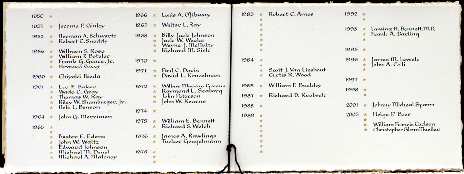
CIA 60TH ANNIVERSARY - 19 September 2007
Diane Ray, widow of Walter Ray honoree at A-12 Article 128 Dedication
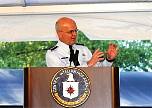 |
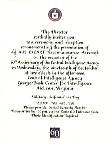 |
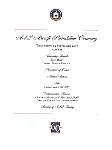 |
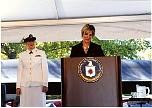 |
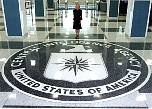 |
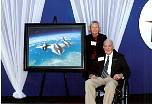 |
In 1997, Jeremy Krans, a resident of the state of Wisconsin realized that no memorial had ever been erected at the crash site of Walt Ray and A-12 Article #125. He researched the location of the crash site, a site that remained secret for many years. If the location was every known, it had become long lost to the public over the passage of time. Krans made several trips to the high desert of Nevada in search of the site. Each time, his expedition grew in size as his family and friends joined to show their patriotic respect to a secret warrior of the Cold War. Krans and all concerned, are to be commended for this gallant show of American gratitude to the memory of Walt Ray.
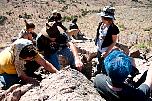 |
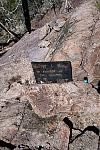 |
 |
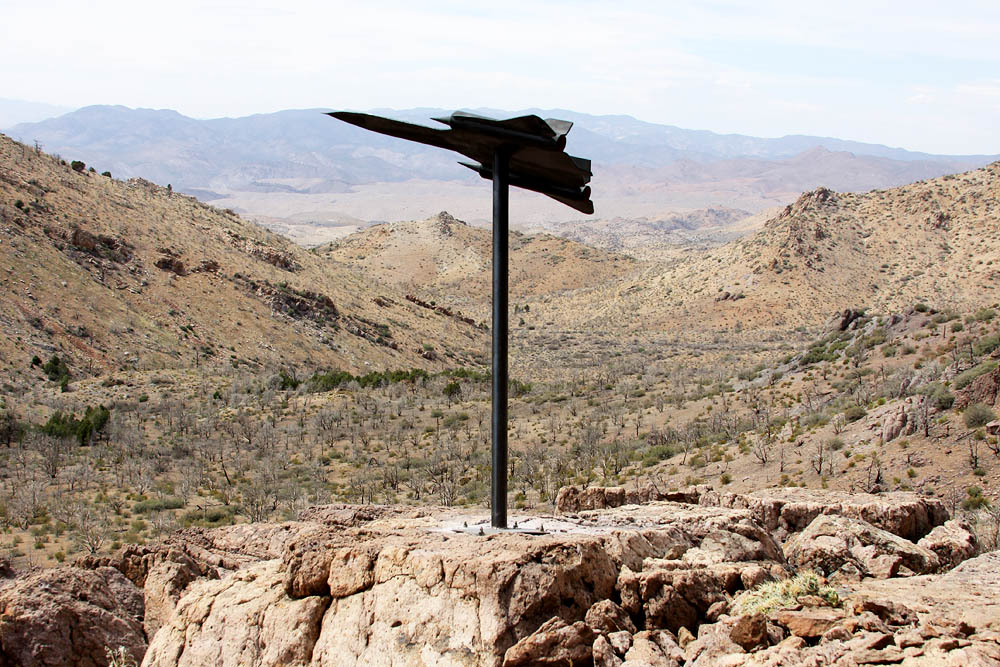
An account of the expedition and photos may be viewed at: The Search for A-12 #125
 |
 |
 |